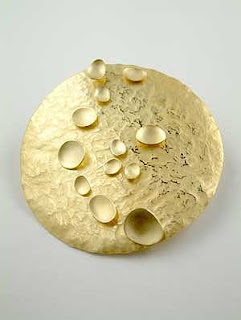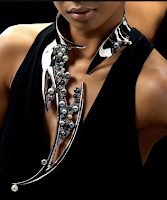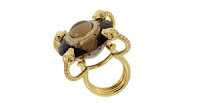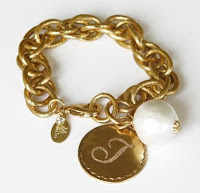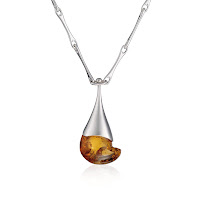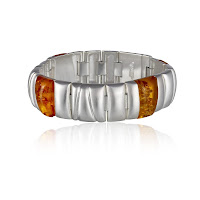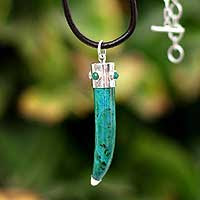
The
Great Barrier Reef in Australia is home to an eclectic array of wildlife including the dwarf minke whale, hawksbill turtle, and white-bellied sea eagle. Spanning over 100,000 square miles, the reef is the world's largest reef system. Australia is also home to featured jewelry designer
Bruce Tully.
The opal gemstone is clearly a wonder of nature; beautiful, iridescent colors of blue, yellow, red, and green ebb and flow amongst one another.
It is like viewing a remnant of a puncture within the arch of a rainbow with each color dispersing upon the extracted dollop in tiny sparkles.
Australia is the world's leading supplier of quality opal gemstones. The country's first commercial mines were discovered in the northwestern area of the continent in White Cliffs and Lightning Ridge.
Tully's bold leap into the jewelry industry seemed predetermined as his cattle rancher great-grandfather, Patsy Tully, found opal on the land he settled over a hundred years ago.
Without relinquishing his rancher position, the elder Tully subsequently established a mine but the gemstones would not be successfully marketed for over 20 years. Adding insult to injury, five decades of drought would halt opal mining for the Tullys.
In 1976, the junior Tully would work part-time alongside his father, Cameron, mining old claims. Not unlike the numerous legends surrounding the gemstone, Bruce became enamored by the opal's ethereal beauty.
Long before venturing into the mines, however, Tully always believed that ranching was not his true calling, and these opulent gemstones would serve as a beacon leading him into the world of jewelry design.
"I love the land but it wasn't a love of mine to be a farmer. I felt pressure not to sell the family farm because our family had worked the land for so many years," he says.
"I walked into the workshop of a Quilpie jeweler and there were big, impressive faces of opal. Good quality opals are extremely rare, rarer than diamonds. I knew this was an industry waiting to take off."
By 1998, Tully decided to sell the family farm, setting out to change his homeland's dismissive treatment of the opal.
He observed that most jewelry renderings were at best cheesy with only a sliver of the stone implemented. Tully wanted to emulate Australia-based retailer
Paspaley Pearls, which helped to bring pearl jewelry to the forefront of the country's jewelry market.
His journey to build his brand
Depazzi (the name of the family's opal mine) is best described as a whirlwind; both frenzied and exhilarating. Through a scholarship, he traveled to Italy studying under tutors
Isabel Herrera, and
Gianpaolo Lodi.
For several months, he would develop his design sketches, absorb the ambiance of his surroundings, and build a friendship with an heir of the Gucci dynasty,
Elisabetta Gucci.
"After nearly two months in Italy, I had to pinch myself to believe I was there. Elisabetta introduced me to people that could advise me and she became a major influence."
Tully did further globetrotting attending trade fairs, fashion weeks, and meeting with patent attorneys in Germany, the United States, Italy and Switzerland.
Seasoned designers in the field initially met Tully's unique design approach with apprehension. He remained focused, however, taking a stylistic risk of incorporating crocodile, stingray, and snakeskins into his men's jewelry collection.
"Jewelers I talked with about using skins didn't want to work with it because they didn't consider it jewelry.
I was surprised that there seemed to be so many rules about what stones went with what and what you could do and what you couldn't do," he explains. "I couldn't see why the rules couldn't be broken. I started making pieces with the skins to show them what my vision was for it."
His opal pieces, for the most part, are classic and streamlined in arrangement and proportion with the gemstone the focal point. The opal pieces from the
Depazzi's Art Series Collection, on the other hand, are more organic and raw with irregular facets.
The animal hide items are beautifully innovative using crocodile skin interspersed with metal as a ring band or the centerpiece of cuff links.
The implementation effortlessly provides a masculine energy that suggests an adventure-driven undercurrent as well as an understated sensuality and sex appeal. Overall, the pieces I viewed online are differentiated, rugged, and ethereal capturing that earthy Australian spirit.

In 2009, Tully established the
Depazzi flagship store in Hyman Island Resort, and both he and his company continue to evolve.
The designer relishes every moment. "You get one shot at life and I know I would have died a bitter old man if I had not pursued my dream."
_________
Photo 1 (top right): Opal Pendant
Photo 2 (bottom left): Ring with Crocodile Skin
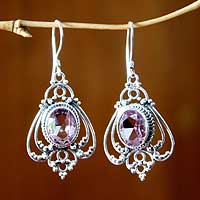 The intricate structure of the Borobudur stupa, located in Java, Indonesia, is an astounding feat of architectural design.
The intricate structure of the Borobudur stupa, located in Java, Indonesia, is an astounding feat of architectural design.
